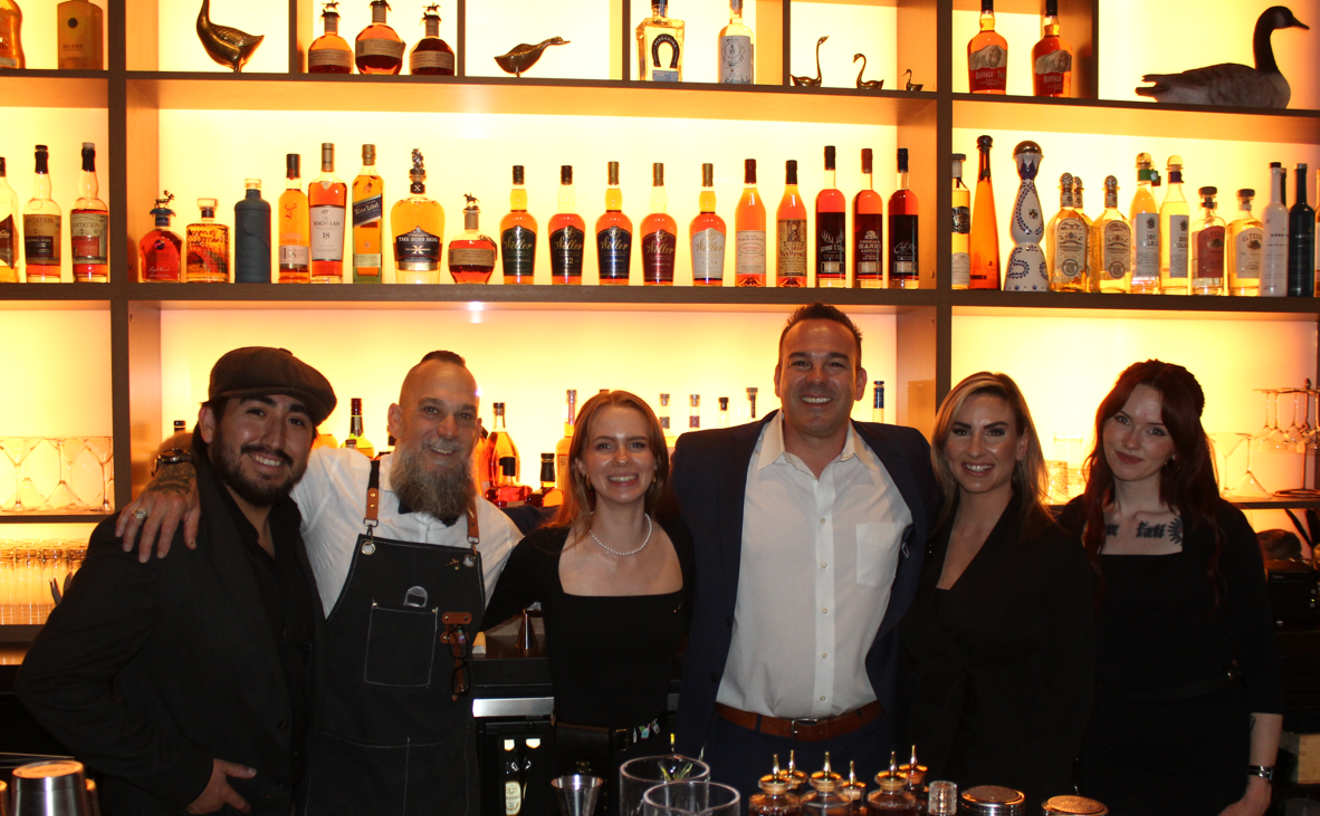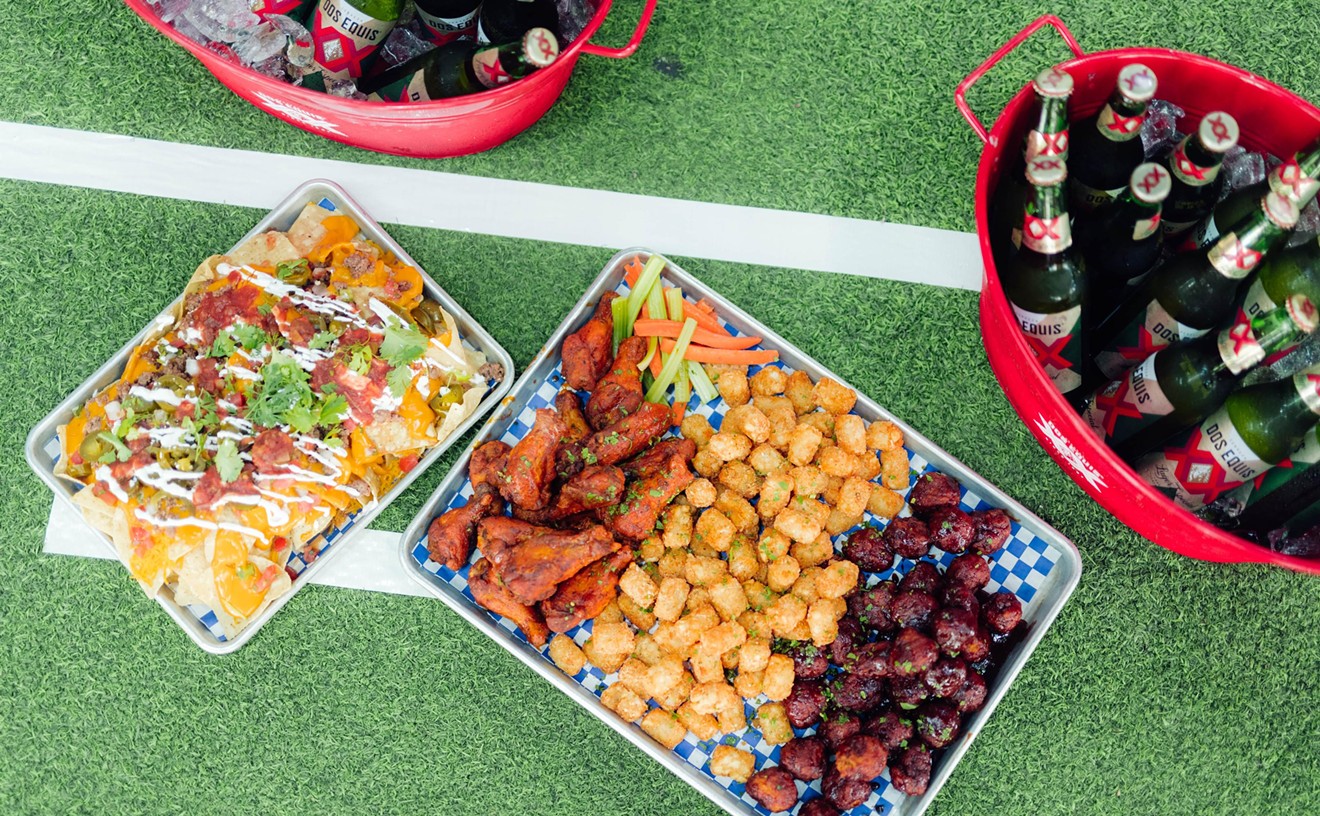And then in the '90s, fancy food was suddenly fashion for the masses. Chefs were celebrities, rather than cooks. Many of the changes were wonderful, with the mainstream introduction of once-exotic ingredients. Bless the chefs who moved us from the humble button mushroom to interesting varieties like shiitake, nameko and oyster.
But with exotic ingredients came idiot behavior in the kitchen. As chefs leapfrogged over each other in the quest for fame, crazy genres began popping up -- completely confusing cooking styles like fusion, nouveau, deconstructed, craft, retro, millennium, and that horrid fad of "raw," where meals consist solely of raw vegetables, raw grains, and, for some people, even raw meat. Dining out became work as chefs messed with our heads. A simple steak dinner became a cut of beef drenched in balsamic. I swear chefs have even begun making up words -- like cauliflower "foam," and "guitar-cut" pasta, both of which I've seen on recent James Beard House menus.
It's all become so darn pretentious, and so irritating, like a version of "Chefs Gone Wild."
Yet finally, there's a culinary movement I can truly get behind. The concept is called Slow Food, and it's a beautiful thing. It started quietly in the Valley about two years ago, and is finally gaining some real momentum with the opening of two new Slow bistros, Ruby Beet Gourmet and Pane Bianco, both in downtown Phoenix.
I am absolutely thrilled to see Slow Food finally catching on here. Based in Italy, it's Utopia for foodies. Slow Food followers are international gourmets who celebrate local growing and cooking traditions in an age when technology and speed have affected most people's eating habits. Cans, boxes and bags are banned from "slow" cuisine; rather than succumbing to mass-produced convenience food, this team emphasizes the carefully crafted work of small farmers and artisans. Eco-friendly habits are critical, and chefs dedicated to the cause agree to utilize locally grown-created, organic ingredients as much as possible (it's an oft-told joke that these chefs are so in touch with the quality of their products that they can recite the name of the cow our steak came from, but it's almost true -- last year I attended a Slow Food event in Queen Creek where the pig we roasted was named Wilbur).
Ruby Beet is owned by Valley newcomers Karen Dawson and Marjorie Hoskins. Pane Bianco is the latest creation of Chris Bianco, who also owns the intensely popular Pizzeria Bianco and Bar Bianco (located, coincidentally, directly across the courtyard from Ruby in Historic Heritage Square).
These chefs don't just churn out gourmet sandwiches, soups and salads. They're on a mission to get us to chill out, enjoy life and slow down. The small restaurants share a simple philosophy of tiny menus, utilizing only the finest, freshest, homemade food. It's food that takes the chefs a long time to shop for, a long time to prepare -- and, if we're savoring it as we should be, a long time to devour.
I admit there's a certain amount of snobbiness in Slow Food. I do cringe at the cuteness of the Martha Stewart lifestyle, and nowhere is that more evident at Ruby Beet than in the adorable flowers attached with precious old-fashioned wooden clothespins to take-out sacks. There's a bit of self-conscious cool too, in Bianco's set-up -- the over-the-top urban industrial-style Pane Bianco is a converted 1940s pawnshop centered by a big wood-burning oven. That's neat. Yet the place is also actually the chef's office, and food is take-out only. We stand in line for a long time, pay quite a bit of money for decorator fare, and then our only seating option is wooden picnic tables in the parking lot.
Folks used to great variety in menu choices and flexible dining hours are wasting their time at these two places, too. With limitations of market quality, Ruby generally has four sandwiches, four salads, and a soup, with a few pie choices and ice cream for dessert. At Pane Bianco, we select from four sandwiches, two salads, some drinks and loaves of bread. And such a relaxed philosophy is what gives the two cafes such odd hours -- Ruby's serves lunch only a few days a week, and beginning later this month, light dinners other days of the week, plus sporadic cooking classes. At Pane, we can only get lunch.
But there's no denying that the food is worth the fuss. One taste proves there really is a dramatic difference in such well-loved ingredients. Consider the taste of flabby, water-injected grocery store chickens versus the pure, rich flavor and texture of free-range chicken like those raised at Young's Farm in Dewey (the only kind of poultry we find at Ruby). Anyone who has tasted just-picked beefsteak tomatoes can never go back to trucked-in supermarket varieties. Commercial salad dressings simply can't reach the heights of hand-blended caramelized shallot vinaigrette -- Ruby's blend is tart, softly sweet, silky, and truly worthy of glowing adjectives.
Or consider the arugula Bianco selects for his tuna, red onion, kalamata olive and lemon sandwich. Bianco has long boasted that he's been a proponent of using only the freshest market ingredients possible. At one point a few years back, he was so avid about freshness that he told me he was thinking about serving weeds he'd just pulled from sidewalk cracks (I don't know if he really did it, but if he did, I'm assuming they were nice, edible weeds). This arugula is peppery, almost crisp, with velvety leaves, a classy complement to the pristine quality tuna, imported from Portugal.
There's no question that the idea of savoring food is something to celebrate. Whenever I eat at Ruby Beet, the only thing I think about is my beautiful lunch, and it makes my entire day better. Chalk it up to relaxing ambience, as well as delicious food: the charming historic home of brick and wooden floors, the rustic wooden tables, the big bowl of green Granny Smith apples and the wild flowers. It s always quiet; the servers pad softly, gently offering more fresh-squeezed lemonade or Henry Weinhard's root beer, served frosty in the bottle. I can see the kitchen from where I sit -- the 100-year-old Silva House still feels very much like someone's home, and the cook space is open, airy and flooded with windows.
Also give credit to the no-nonsense recipes. When the menu says Nicoise salad, that's exactly what we get. The plate holds the classic blend of tuna, green beans, hardboiled egg, potatoes, olives, fennel, tomatoes and lettuce. There's vinaigrette dressing, and some bread. It's fancier than usual, of course, with the fish the best from Siciliy, green beans of the crisp French variety, the eggs straight from a local farmhouse, the expertly oven-cured tomatoes, and the bread slabs of handcrafted grilled olive loaf.
Ruby's aptly named Farmer's Market salad showcases what makes Slow Food so special. The dish changes constantly, but I'm fortunate to get a rainbow of lettuces, Niman Ranch bacon, Maytag bleu cheese, oven-roasted tomatoes, local organic apples, sweet corn, baby beets, strawberries and Young's Farm chicken tossed with lemon shallot vinaigrette. A roasted vegetable sandwich is earthy, too, layered with meaty Portobello mushroom, house-roasted red peppers, zucchini, fennel, fresh Italian mozzarella, oven-roasted tomatoes, local organic basil and lemon shallot vinaigrette on multi-grain bread. And I don't even need the balsamic vinaigrette dressing for my panzanella salad -- that's how good I find the imported prosciutto si Dan Daniele del Friuli tumbled with thyme-infused garlic croutons, roasted fennel, caramelized mushrooms, oven-roasted tomatoes, asparagus, artichoke hearts, little white beans and arugula.
I've got to work more for my food at Pane Bianco. I'm not going to find peace fighting the crowds who line up to order, then squish into the parking lot seating. But I've got a trick: I call my order in ahead, then find my oasis on a bench at the Circle of Life monument fountain in Steele Indian School Park just across the street from the bakery. I might eat a sandwich of homemade mozzarella, locally grown organic tomatoes, sea salt, a splash of olive oil and fresh torn basil on a big round of golden rosemary-flecked focaccia (fashioned, of course, from organic flour and filtered water). It might be soppressata (a pressed Italian sausage), aged provolone and wood-roasted peppers. It could be, as it was thanks to a recent daily market special, one of the most blissful sandwiches I've ever enjoyed: a salty bit of bliss with Serrano ham, mozzarella and basil. Another day, another treat: a crispy focaccia flat capped with cherry tomatoes, smoked ricotta and montasio, a piquant aged cheese.
Pane Bianco doesn't offer dessert, but the slow mood is complete with specialty fresh fruits like apples from Willcox, and Fort Bowie peaches.
Finally, food is food again. And now, we can all live happily ever after. At least until the next trend arrives.










